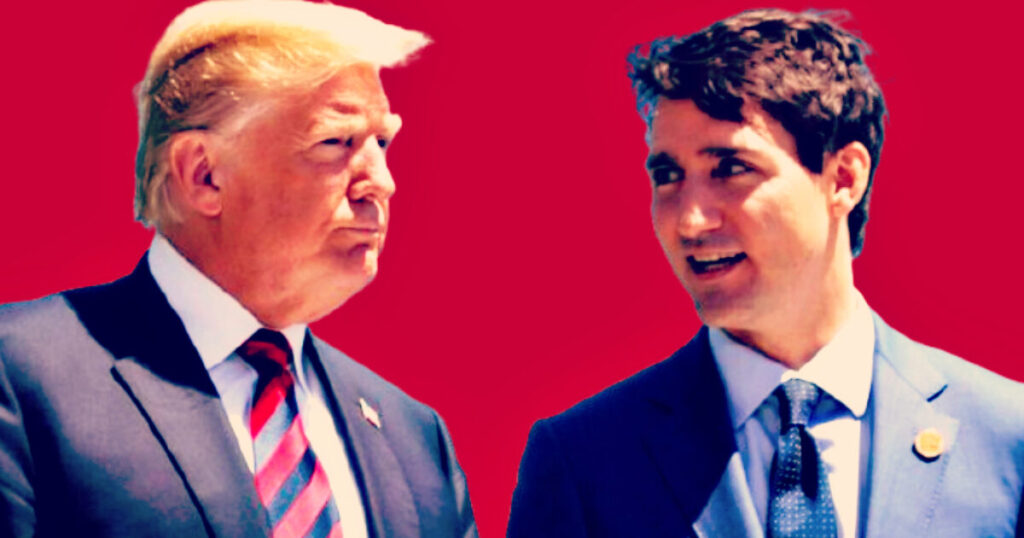The geopolitical landscape is witnessing a resurgence of the “Trump Effect,” particularly as the post-election President-Elect Donald Trump utilizes his social media platform, Truth Social, to communicate influential policies and sentiments. One of the significant recent developments has been Trump’s announcement regarding the imposition of tariffs on goods imported from Mexico, Canada, and China, particularly responding to issues surrounding immigration and drug enforcement. This announcement has sent ripples across Canada, where the government, led by Prime Minister Justin Trudeau, is scrambling to formulate an action plan regarding Trump’s looming tariffs, indicative of the broader economic implications and strained relations that could arise from this.
Trump’s statement, which echoed his campaign themes, indicated a 25% tariff on goods imported from Canada and Mexico as a reaction to the perception that these countries are allowing an influx of immigrants into the United States. He articulated that these tariffs would be effective from the first day of his administration, highlighting a direct connection between immigration policies and trade measures. Furthermore, he announced a 10% tariff on Chinese goods, driven by frustrations towards the Chinese government’s failure to act against drug trafficking, particularly fentanyl. This aggressive trade policy aligns with Trump’s broader “America First” agenda, emphasizing national security and domestic economic interests to his supporters.
In the wake of Trump’s announcement, Trudeau initiated a direct dialogue with him, indicating the urgency of addressing the situation. The two leaders engaged in a phone conversation shortly after Trump’s threat became public, wherein they discussed trade and border security. It underscores the intricate interdependence between the U.S. and Canadian economies, with Canada being a critical supplier of about 60% of crude oil imports to the United States. Officials from the Canadian government reaffirmed their commitment to addressing these concerns collaboratively and highlighted the essential role Canada plays in the U.S. energy market.
Trudeau’s administration faces significant challenges in the face of potential tariffs, especially with prominent political voices like Ontario Premier Doug Ford expressing concerns. Ford warned that imposing a 25% tariff would devastate job markets in both countries and emphasized the need for a unified Canadian response. His call for a “Team Canada” approach underscores the sentiment that a cohesive strategy is vital to confront the complex challenges posed by U.S. trade policies and immigration issues. It signals the necessity for Canadian leaders to come together to form a robust response to protect their economic interests.
Moreover, the situation complicates the already precarious relationship between Canada and the United States, a partnership historically marked by close economic ties and mutual dependence. The tariffs proposed by Trump could result in a trade war that harms both nations’ economies. As political leaders such as Trudeau and Ford navigate this turbulent landscape, the discourse emphasizes a deeper recognition of the interconnectedness of trade, immigration, and national security—a significant concern for leaders on both sides of the border.
In conclusion, the Trump administration’s economic policies, particularly regarding tariffs on Canada and Mexico, present intricate challenges and necessitate urgent dialogue and strategy among Canadian leaders. The immediacy of the situation calls for collective leadership to confront the implications of U.S. trade policies while fostering a cooperative and stable relationship moving forward. As the dynamics between the two countries evolve, the focus will be on how effectively Canada can advocate for its interests while addressing the broader concerns of immigration and border security to mitigate potential economic fallout.

